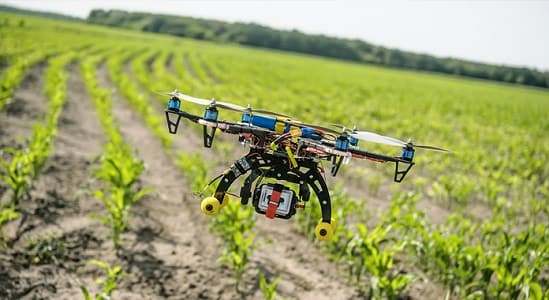Digitization refers to the integration of technology into agricultural practices. Commonly referred to as agri-tech, this process involves a lot of technological advances like the internet and big data. These technologies are used alongside satellites that provide weather information, enabling producers to monitor crop growth in real-time and forecast output accurately with considerable amounts of accuracy.
Data collected from sensors, drones, machinery, and other devices are also used to provide farmers with important information about their crops at all times. This information is then processed by artificial intelligence algorithms which give powerful recommendations for maximizing harvest quantity and quality. Furthermore, it allows farmers to make choices regarding the best crops to harvest.
Implementation of Digitization in India

The government of India has recognized the need to modernize and digitize the sector. Through various initiatives, along with the support of some companies and private investors, it is hoping to implement widespread digitization of this sector by 2025. Invest India has highlighted several key initiatives and events that are driving India’s digital agriculture growth.
- According to an article published in Betway, in September 2021, the government launched a national mission to digitize agriculture. Through this initiative, five memoranda of understanding (MoUs) were signed with companies such as Cisco, ITC, Jio Platforms, and Ninjacart in partnership with government branches like the National Commodity and Derivatives Exchange (NCDEX) and the National e-Markets Limited (NeML). The main objective of this mission is to facilitate the modernization of agriculture through the implementation of various technologies.
- Jio Agri (Jio Krishi) is a new platform that provides farmers with technology to increase their yields. The platform makes use of various data sources and AI algorithms to interpret this data. It also provides precise and targeted advice to farmers to maximize their yield. The Government of India and Microsoft announced a partnership to support the small farmers of India through a pilot program referred to as the Unified Farmer Services Interface. Ultimately, the aim is to increase farmer incomes through effective price management and yield monitoring by utilizing AI-enabled sensors. Six institutions are collaborating to implement the Indian Government’s Sensor-based Smart Agriculture (SENSAGRI), which focuses on the development of drones that use hyper-spectral remote sensing (HRS) sensors.
Future of Digitization
According to estimates from the NITI Aayog, by 2025 the digitization of agriculture alone could be worth approximately US$2.6 billion. That’s amazing because this field is experiencing a CAGR of 22.5 percent. If digitization is implemented effectively and short-term targets are achieved, the market size of the agricultural sector is expected to reach INR 111,916 billion by 2026 as compared to INR 55,994 billion in 2020, with an expected CAGR of 12 percent. There’s no doubt that the digitization of agriculture will greatly benefit the country with a growing population of almost 1.3 billion people, it’s important to meet the inevitable surge in demand for agricultural products and their multitude of uses. Overall, these are great expected outcomes of this digitization process for the future of both consumers and farmers.
Santosh Kumar is a Professional SEO and Blogger, With the help of this blog he is trying to share top 10 lists, facts, entertainment news from India and all around the world.
